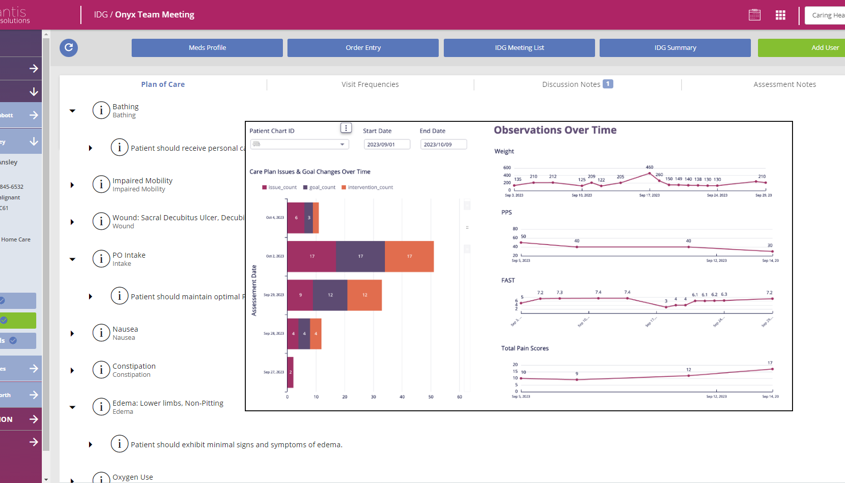The Importance of Monitoring Patient Decline Data in Hospice Care
The very mission of hospice care is to provide comfort and dignity at the end of life. To fulfill this mission, it is crucial for hospice care providers to closely monitor the patient’s decline to allow for early detection of any changes in the patient’s condition. But the current systems that most providers use to track the patient’s health journey create difficult workflows for getting pertinent information quickly. In this post, we’ll discuss the importance of monitoring patient decline data in hospice care and how to make your data work for you.
Recognizing Signs of Decline
The most common signs of patient decline include increased weakness and fatigue; increased pain or discomfort; changes in appetite and weight loss; increased difficulty in breathing; changes in mental status or cognition; and physical distress. By recognizing these signs early on, the hospice team can provide appropriate and timely care to ensure the patient’s comfort and well-being.
Traditionally, hospices have captured this data in their electronic health records systems and use it to make timely adjustments to medication dosages, pain management plans, or other interventions to ensure the patient’s comfort and symptoms are controlled. But in most systems, this information isn’t quickly available and can even be overlooked by members of the care team depending on how the data is organized and presented.
Innovating Data Monitoring
In a time of increased scrutiny from the CMS, having this data well documented and summarized clearly is exactly what hospices need to create defensible documentation every time without question, relieving any doubt in an administrator or DON’s mind about the quality and compliance of their care.
In a time of competition, this allows hospices to elevate their care standards and quality of care to new levels by having quicker access to changing data that requires critical and quick decisions.
In addition, monitoring this data helps you evaluate the effectiveness of your care plans. By analyzing the data, you can determine if your current strategies are yielding the desired outcomes or if alternative approaches need to be considered.
Furthermore, monitoring patient decline data serves as a valuable tool for communication and collaboration with the patient’s family. By sharing the data with them, you empower them to actively participate in the care process and make informed decisions. This partnership not only enhances the patient’s overall experience but also helps alleviate some of the emotional burdens that families may be facing.
Empowering family members through information and guidance fosters a sense of partnership between healthcare professionals and families. It helps families feel more involved in the care process, promoting a sense of control and ownership. By working together, healthcare professionals and families can ensure that the patient’s end-of-life journey is as comfortable, peaceful, and dignified as possible.
Curantis Solutions’ Approach
At Curantis Solutions, we are making your data work for you with InformatusTM, our proprietary methodology for presenting the critical data you need right when you need it. To support timely decision making, we provide you with a quick snapshot of the most important patient decline indicators you need. We give clinicians the ability to quickly see weight, PPS, FAST and pain scores all together, trended over time. We also show you a summary of care plan issues, goal count and intervention count over time within this same dashboard view. Simple, easy-to-read graphs help you quickly see the bigger picture of a patient’s journey to know what is needed most to provide the best possible care.
Summary
Having the ability to easily track patient decline data enables healthcare professionals to ensure that the patient’s physical and emotional needs are met effectively. They can assess the effectiveness of the care plan and make necessary adjustments. It allows healthcare providers to evaluate if the current treatment modalities or interventions are providing the desired outcomes or if alternative approaches need to be considered. This personalized and responsive care ensures that the patient receives the best possible support throughout their final days.
Furthermore, monitoring patient decline enables healthcare providers to engage in important discussions with the patient and their family. It helps in facilitating conversations about goals of care, advance directives, and end-of-life preferences. This ensures that the patient’s wishes are respected, and their end-of-life journey aligns with their values and beliefs.
Book a discovery call today!







